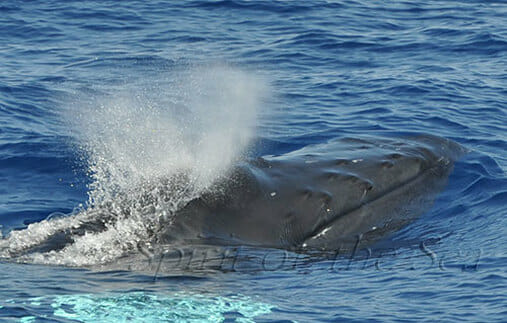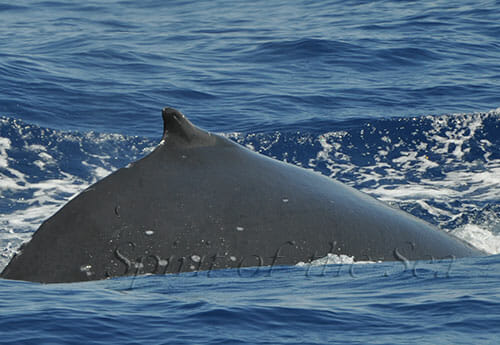Humpback whale
Sighting
Humpback Whale in Gran Canaria
The humpback whale in Gran Canaria (Balaenoptera novaeangliae) is one of the most iconic and easily recognizable whale species in the world. They are famous for their spectacular aerial acrobatics and complex songs, which can be heard over long distances underwater. This majestic marine mammal belongs to the group of baleen whales (mysticetes), which have baleen plates instead of teeth.
These impressive animals inhabit all oceans, from tropical waters to polar regions, making them a truly cosmopolitan species. The humpback whale undertakes one of the longest migrations of any mammal, traveling up to 25,000 km per year, with single journeys of up to 8,000 km each season. During summer, they feed in cold, nutrient-rich waters such as polar regions, while in winter they migrate to tropical and subtropical seas to reproduce.
Spotting a humpback whale in Gran Canaria is a unique experience, as this Atlantic island is strategically located along their migratory routes, offering visitors and ocean enthusiasts the chance to observe one of the most fascinating creatures in the ocean up close.
Physical Characteristics of the Humpback Whale
One of the most distinctive features of the humpback whale in Gran Canaria is its extremely long pectoral fins, which can reach up to 5 meters. These fins have serrated edges and are often covered with barnacles. In contrast, the small dorsal fin is usually accompanied by a hump at its base, which gives the species its common name. Their knobby head is covered with tubercles, and the black-and-white pattern on the underside of the tail fluke is unique to each individual, functioning like a fingerprint that allows researchers to identify them.
This species is characterized by being large and robust. Males average about 15 meters in length, while females are slightly larger, reaching up to 19 meters. Their weight ranges from 30 to 40 tons, with some individuals reaching up to 48 tons. Typically, their dorsal side is dark gray or black, while the underside is lighter. Humpback whales from the Southern Hemisphere tend to have more white areas on their bodies.
Intelligence and Social Behavior
The humpback whale in Gran Canaria mainly feeds during the summer in polar waters, living off their fat reserves during the winter breeding season. Their diet primarily consists of small crustaceans and small fish such as herring, capelin, and anchovies.
They are famous for their cooperative hunting method called the “bubble net” This technique involves a group of whales swimming in circles beneath a school of fish, releasing bubbles that form a “net” to push the prey toward the surface, where the whales can engulf them.
Humpback whales are also one of the most active and acrobatic whale species. They perform spectacular breaches (leaps out of the water), tail slaps, and pectoral fin slaps against the ocean surface. These behaviors are linked to communication, socialization, parasite removal, or even intimidation.
Males are especially famous for their long and complex underwater songs, which can last between 10 and 20 minutes and be repeated for hours. These songs are believed to play a key role in courtship and mating. If you want to witness the majesty of whaless in their natural habitat, don`t miss the opportunity to embark on an unforgettable adventure with us.




